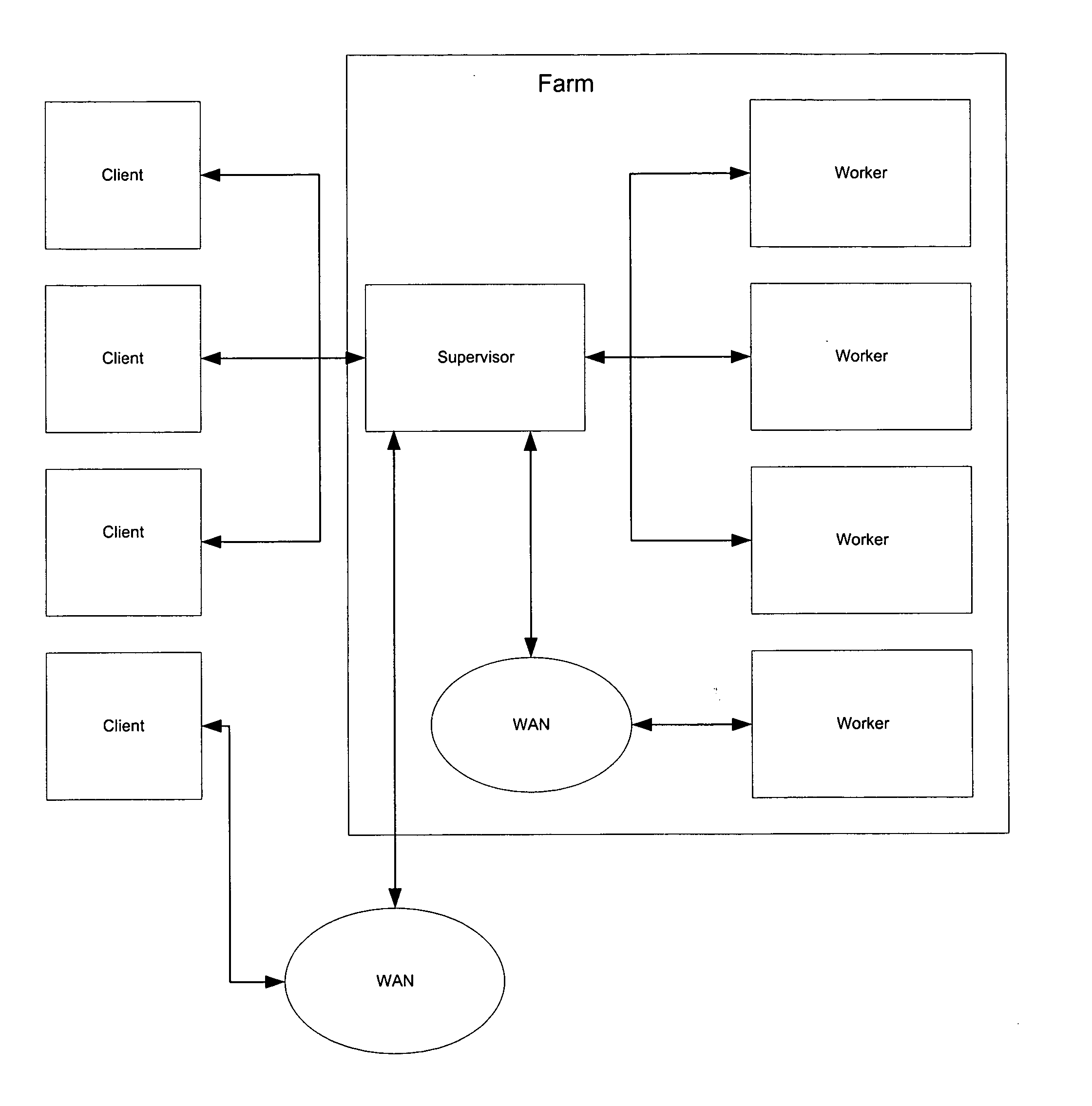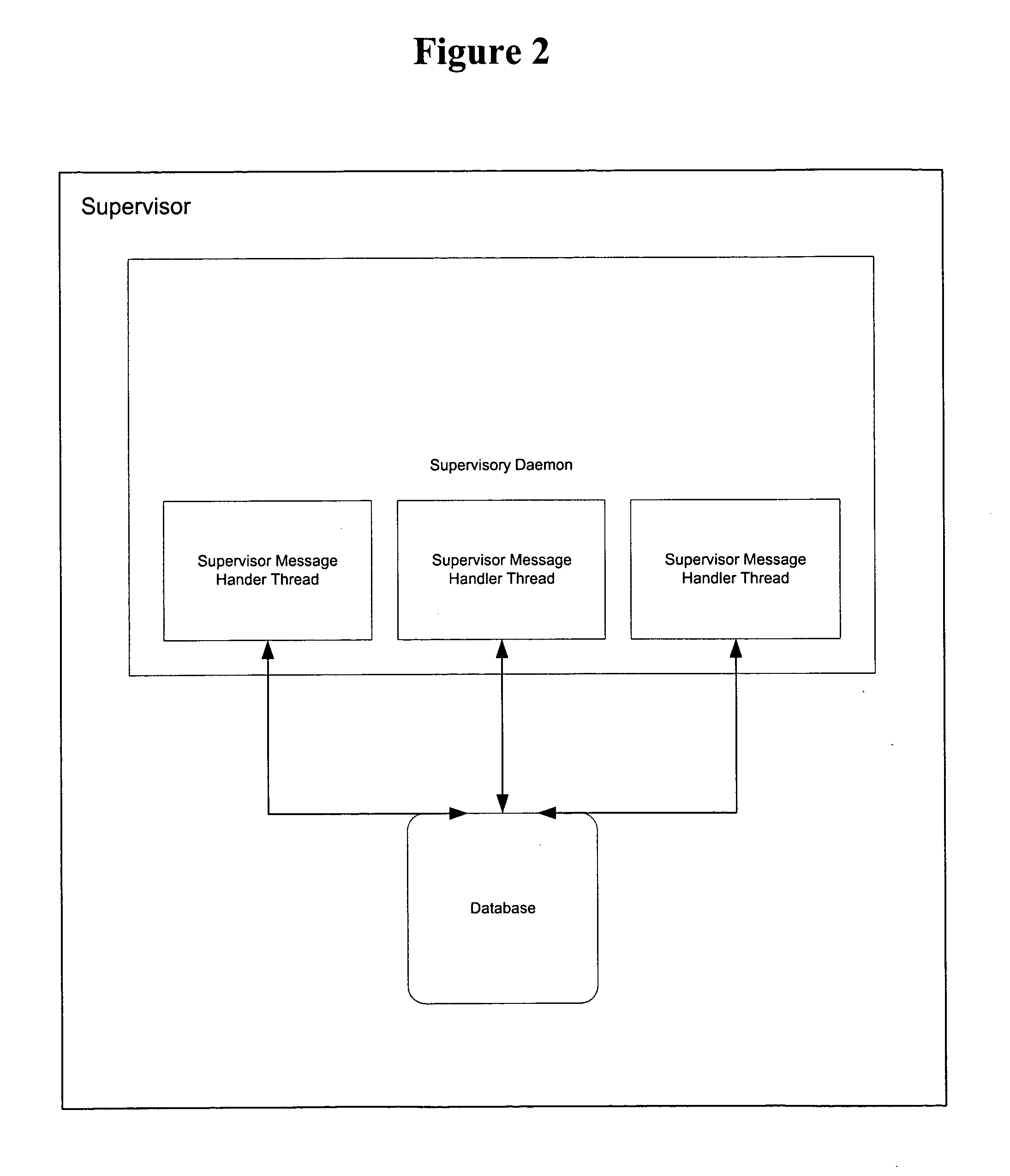Such systems are easier to design and code, but consume inordinate amounts of time and resources as the number of jobs and / or hosts increase(s).
Existing queuing systems typically maintain a master
job queue and continuously sort jobs versus hosts, which consumes significant computing power.
The traditional approach to computing a
job queue quickly becomes a processor-bound
bottleneck that compromises the productivity of the entire farm.
Few, if any, queuing systems in use today have solved these problems.
Computer-generated theatrical films are one of the most challenging domains for queuing systems, since each frame of
computer graphics requires a few minutes to a few days of “rendering” (generating 3D
graphics and lighting from textual instructions), depending upon complexity of the
graphics and processing power of the computer; each second of film contains 24 frames.
Existing queuing systems, especially those published for heterogeneous platforms, typically rely on (1) a human (an end-user and / or a “
system administrator”) to assign priorities to jobs, with the obvious problem that each user often considers his or her job to have high priority, and (2) load-sharing
software that periodically balances the
workload among clusters and among computers within clusters based on a limited set of performance rules, an approach that does not allow system administrators to predict where or when a job will execute; and (3) generalizing all possible permutations of known user, administrator, and system requests and coding of those permutations into the supervisory
daemon, which results, inter alia, in an intractably large search tree.
The first method is tedious, and error prone, and the second method is unpredictable and doesn't show results quickly enough.
Existing queuing systems have difficulty identifying processing bottlenecks and handling resource failures, handling the unexpected introduction of higher priority jobs, and increasing the number of jobs and hosts.
Moreover, existing queuing systems developed and marketed for a particular industry or application, e.g.,
semiconductor device design or
automotive engineering, are often ill-suited for other uses.
Even optimized by filtering, the existing art of sort and dispatch has at last seven major problems: (1) the job sort routine could take longer than the interval between periodic host sort routines, called a job sort overrun condition, which is normally fatal to dispatch; (2) the sort and dispatch routine is run periodically, even if unnecessary, which can result in delays or errors in completing other supervisory tasks, e.g., missed messages, failures to reply, and hung threads; (3) an available host may experience excessive
delay before receiving a new job because of the
fixed interval on which the sort and dispatch routine runs, called a “host starvation” condition; (4) the sort and dispatch routine is asymmetric and must be executed on a single processing thread; (5) the number of jobs that a queuing system may reasonably
handle is limited strictly by the amount of time it takes to execute the sort and dispatch routine; (6) the existing art produces uneven service, particularly erratic response times to job status queries by end-users and erratic runtimes; and (7) uneven service offends and provokes end-users.
Because most queuing systems use a fixed period scheduling
algorithm (aka “fixed period queuing system”), it is impossible for them to easily accommodate deadline jobs or “sub-period jobs”.
Another drawback of fixed-period queuing systems is that a job sort and a host sort require a significant amount of processing power; and dispatch times increases exponentially for an arithmetic increase in jobs or hosts.
This are very serious problems for large farms.
The existing art solutions have two major problems.
First, wrapper scripts, execution scripts, and EUIs are difficult to maintain across distributed systems.
The second problem is maintenance of the EUI and the libraries.
If each tool on each webserver and / or end-user computer is not properly maintained, jobs cannot be submitted or processed.
There are several pitfalls associated with using either string IDs or job names for inter-job coordination.
One drawback is that certain job relationships are impossible to establish without a job log file (a file in which job relationships are defined as the jobs are entered) and using the job log file to process each job's relationship hierarchy.
A second inter-job coordination problem arises in archiving inter-job relationships so that they may be recovered and replicated.
If the log files or libraries are lost or otherwise inaccessible, the job relationships cannot be recovered or replicated.
Even more serious problems are that earlier jobs cannot cross-reference later related jobs (a user or process doesn't know the string ID of a later job at the time of submission of an earlier job), and that the most complex
namespace model is a job tree.
First, some operating systems limit the amount of data transmittable to an executing program or script.
It can be difficult to debug this method in actual production use.
Another limitation is that the available commands, and
syntax of command line statements, isn't standardized across platforms.
Building interfaces that can generate and recover command line parameters and arguments is difficult.
These limitations can make even a simple job submission interface difficult to build and to maintain.
Using command line interfaces to manage heterogeneous platforms in a distributed farm is even more difficult.
Nevertheless, using command line interfaces to manage distributed farms is a
common method in the existing art, given the lack of a better solution.
 Login to View More
Login to View More  Login to View More
Login to View More 


